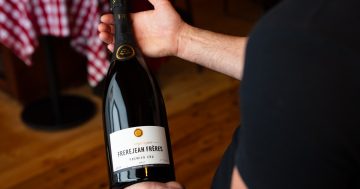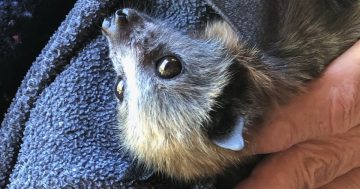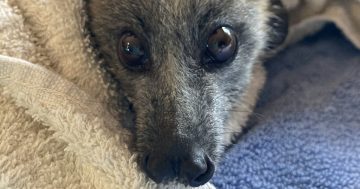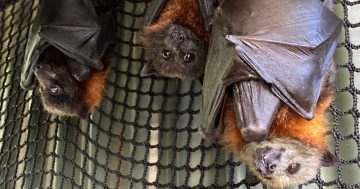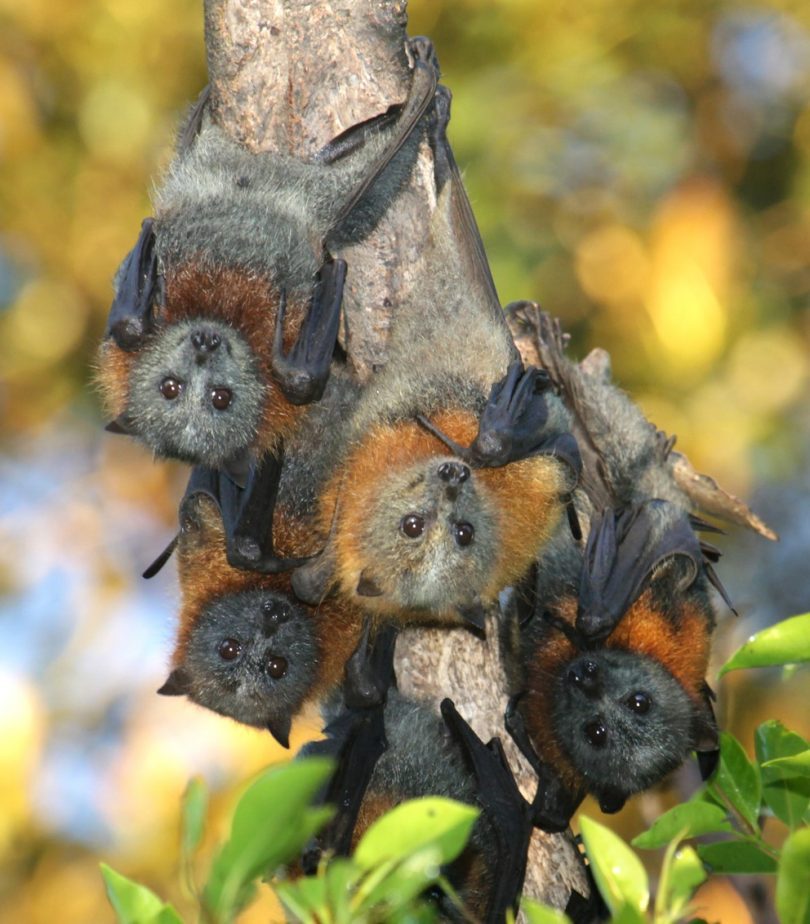
Flying foxes are important tree pollinators. File photo.
We’re all sweltering, but spare a thought for the flying foxes currently roosting in Commonwealth Park.
The endangered, protected native animals are literally dropping like, well, flies, as temperatures hit a bone dry 40 degrees day after day.
ACT Wildlife president Marg Peachey says they’re very concerned about the wellbeing of the animals, which can cope with hot weather, but not day after day of baking heat. “They’re coastal animals and they’re used to more humidity,” she says.
“When it’s very hot, they hang from the trees and flap their wings to cool down. As the day gets hotter they move closer to the trunk, and then move lower down. When they’re extremely stressed they fall off and all we can do at the moment is have volunteers stationed near those trees to spray them with water.
“If they don’t revive after being sprayed three times at 15-minute intervals, we take them into care for sub-cutaneous fluids.” Marg says ACT Wildlife is currently “flat out” rescuing both flying foxes and other heat-affected native animals.
Region Media has contacted the NCA to ask for a comment on the threat to the animals’ wellbeing and rescue efforts.
There are over 5000 flying foxes in Canberra at the moment, on their annual migration in search of food from the coast. Suburban Canberra has long been a haven for its proliferation of backyard fruit trees, and each night, the adults fly out in search of apricots, figs or mulberries, leaving their babies at the roost.
That can cause problems too: low-quality single-filament fruit tree netting with large holes can trap flying foxes and injure them badly as the netting cuts into the animals’ limbs. Orphaned babies are then particularly vulnerable and will die without their mothers.
But whether you see heat-exhausted flying foxes in Commonwealth Park or trapped in your apricot tree, please don’t approach them yourself. ACT Wildlife has trained volunteers who have also been vaccinated against lyssavirus and know how to handle the stressed animals.
Marg Peachey has short shrift for people who see the flying foxes as a pest. “People should remember that we need bats,” she says. “Without bats, there aren’t any trees because they pollinate the trees. Beat-ups about the danger of being bitten make me really angry.
“There is no danger from lyssavirus unless you’re bitten or scratched, and if you don’t approach them, that won’t happen to you. What we really need are signs near the colony telling people to leave them alone, and call ACT Wildlife if they see one that needs help.”
In your own garden, Marg recommends using high-quality fruit netting that’s pulled tightly across a tree and anchored to the ground or a frame. The mesh holes should be too small to poke your finger through and anchored so that the flying foxes can’t get inside.
ACT Wildlife is always in need of volunteers. An orientation session is being held on January 27, and there are several more planned throughout the year, including species training. Further information can be found here.
If you see an animal in distress needing immediate help, call the ACT Wildlife Hotline: 0432 300 033.












